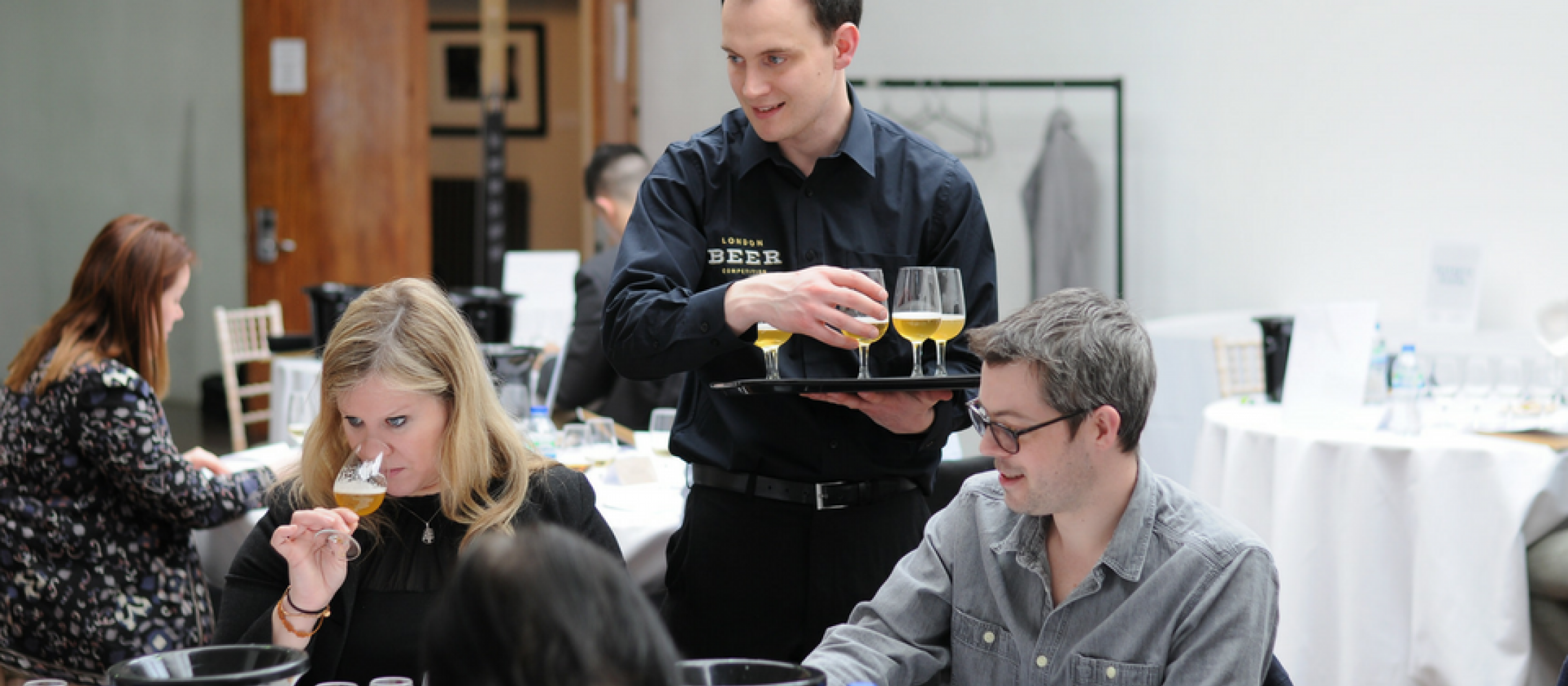Submission Deadline
28 February 2026
Judging
Date
23 March 2026
Winners Announcement
22 April 2026
28 February 2026
23 March 2026
22 April 2026

Spain is not known for its beer, but that may be about to change. The country’s burgeoning craft-beer culture is grabbing attention around the world, and now a beer made by a tiny brewery in the Basque Country has won the top prize at the London Beer Competition.
Black Gold, an 8.5 percent ABV stout aged in rum barrels from the Basque Oak Brewery, which is based in Guernica, was the only beer to score above 90 points in last month’s inaugural event, earning it a Gold. It’s a result that demonstrates how far Spanish beer culture has come in the last few years.
“I was surprised to discover the winning beer was Spanish, and then the week after the judging I went to Catalonia, and I no longer am,” says Pete Brown, multi-award winning author and a judge at the London Beer Competition.
 “This is a new beer scene with no historical ties, so they have complete creative freedom, in a region that’s famous for its gastronomy. There’s a lot more champion beer to come from the various regions of the Iberian peninsula.”
“This is a new beer scene with no historical ties, so they have complete creative freedom, in a region that’s famous for its gastronomy. There’s a lot more champion beer to come from the various regions of the Iberian peninsula.”
Eight beers were awarded a Silver medal after scoring between 76-89, with a further 12 taking away a Bronze (65-75 points). Brewery of the year was won by Sambrook’s, who had three beers in the Silver category: Battersea Rye, Battersea IPA, and Russian Imperial Stout.
“Sambrook’s success demonstrates the quality of beer that is being made in the British capital at the moment,” says judge and beer writer Will Hawkes. “Sambrook’s were one of the breweries that really kick-started London’s renaissance, and they’ve maintained their standards ever since.”
Best in Show awards went to Wold Gold from Yorkshire brewer Wold Top and Dark Island Reserve from Orkney Brewery in Scotland. Sambrook’s were also commended for the value of the beers, with Battersea IPA and Battersea Rye winning the Best in Show by value prize.
Breweries from around the world entered the awards, with Funky Bow from Maine in the USA taking home silver awards for two of its beers.
The competition launched this year, but plans are already being made for 2019. The 11-strong judging panel included Brown, Hawkes, British beer writer of the year Adrian Tierney-Jones, secretary of the British Guild of Beer Writers Ros Shiel, beer buyer and former publican Mitch Adams, and beer sommelier Anna Aitken.
Judges tasted samples blind before assessing the packaging, ensuring that the latter wouldn’t affect their impression of the former. They were also told what the beer would cost the consumer. This process is intended to ensure judges get an all-round view of a product; it means a gold-medal winner impresses in how it tastes, what it costs and how it looks.
“I was impressed with the LBC’s organization, the staffing, the quality of the samples we tasted and the clarity of the guidelines for judges; I look forward to seeing the competition move forwards,” says Tierney-Jones.
The London Beer Competition offers breweries a better overall picture of their product's quality than other competitions, according to chief executive of Beverage Trade Network Sid Patel. “At all the major competitions, beers are judged solely on the quality of what’s in the bottle or can,” he says. “We wanted to take a different approach, by asking our judges to look at beers the way shoppers do, adding appearance and value for money into the mix.
“The best-tasting beer in the world will stay on the supermarket shelf unless the pack design and price point appeal to the consumer. Equally, if the taste doesn’t live up to expectations, there will be no repeat purchase.
“Including all three factors in the judging produces results that are closer to the reality of the way consumers purchase beers and gives brewers better feedback on how their beers are perceived by shoppers.”
Show your beers where it matters. Get your products tasted by top buyers and experts at the London Competitions — enter now.